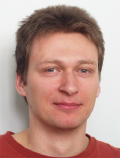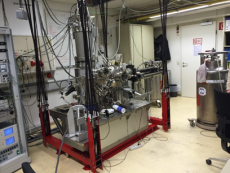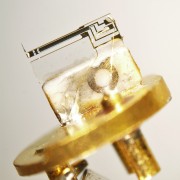This is an old revision of the document!
Martin Setvin - Universitätsassistent - Surface Physics Group
Contact Information
- Institut für Angewandte Physik, Technische Universität Wien
Wiedner Hauptstr. 8-10/134, 1040 Wien, Austria - Phone: (+43 1) 58801 - 13458
- email: [email address: lastname @ this server · enable javascript to see it]
History
Download CV: cv_setvin_2018_06.pdf
- June 2018: Finished habilitation at the TU Wien (Experimental Physics)
- 2015 - Universitätsassisstent, TU Wien
- 2012-2015: Postdoc at TU Wien, Austria (Supervisor: Ulrike Diebold)
- 2008: Joint Graduate Fellowship at National Institute for Materials Science, Tsukuba, Japan (under supervision of Kazushi Miki)
- 2009-2012: Part-time employment as a researcher at the Academy of Sciences of the Czech Republic (Nanosurf group, Pavel Jelinek)
- 2007-2012: PhD at Charles University in Prague (supervisor Ivan Ostadal)
Research Interests
During the first couple of years in Vienna I was mostly focusing on the surface science of TiO2 anatase and rutile.
In 2015 the group has purchased a combined STM/AFM machine in the q-Plus configuration (funded by the FWF Wittgenstein Preis Z-250 of Ulrike Diebold). This technique has proven very successful in various fields. The main focus of my research is exploring the possibilities offered by this technique on oxide surfaces and other wide-band-gap materials. The research has several directions:
* TiO2 anatase and rutile - these are well-understood oxides and serve as a suitable substrate for testing the capabilities and limitations of the q-Plus technique.
* Cubic perovskites KTaO3 (001) and SrTiO3 (001) - The surface science of ternary oxides is relatively poorly understood compared to binary oxides. We have developed a procedure for preparing nice (1×1) bulk-terminated surfaces of these materials. Such surfaces offer an interesting playground for investigating the material stability, surface chemistry, electronic structure, incipient ferroelectricity, etc.
* Scintillating materials (Eu-doped alkali halides)
My little research subgroup typically consists of 2-3 students working on my topics, and I closely collaborate with several doctoral students and postdocs from the Surface Physics group, focusing on materials like Fe3O4, Fe2O3, In2O3 and Ca3Ru2O7.
Selected Recent Publications
“Polarity compensation mechanisms on the perovskite surface KTaO3 (001)”Science 359, 572 (2018), DOI: 10.1126/science.aar2287
“Electron transfer between anatase TiO2 and an O2 molecule directly observed by atomic force microscopy”PNAS 114, E2556 (2017)
“Methanol on Anatase TiO2 (101): Mechanistic insights into photocatalysis”ACS Catalysis 7, 7081 (2017)
“Polaron-driven surface reconstructions” Phys. Rev. X 7, 031053 (2017)
“Surface point defects on bulk oxides: atomically-resolved scanning probe microscopy” Chem. Soc. Rev. 46, 1772 (2017)
“Following the reduction of oxygen on TiO2 anatase (101) step by step” J. Am. Chem. Soc. 138, 9565 (2016)
“Direct View at Excess Electrons in TiO2 Rutile and Anatase” Phys. Rev. Lett. 113, 086402 (2014)
“Charge Trapping at the Step Edges of TiO2 Anatase (101)” Angew. Chem. Intl. Ed. 53, 4714 (2014)
“Reaction of O2 with Subsurface Oxygen Vacancies on TiO2 Anatase (101)” Science 341, 988 (2013)





